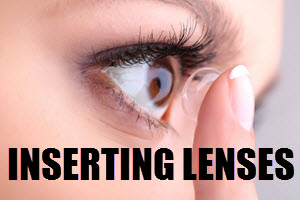The Emergence of Colored Contact Lenses
Colored contact lenses have become an intriguing element in modern fashion and personal expression. Initially designed for medical purposes, these lenses have transcended their original functions, becoming a significant component in the beauty industry. With the ability to both correct vision and alter eye color, colored contacts offer versatility that appeals to a broad audience.
Historical Context
The journey of contact lenses from a medical tool to a fashion accessory is quite fascinating. Initially, the primary purpose of contact lenses was to correct vision impairments. The earliest forms of contact lenses can be traced back to the 19th century, when the foundational ideas of improving sight by placing a lens directly on the eyes were being explored. However, it wasn’t until the late 20th century that colored lenses began gaining attention, largely outside the medical arena. This shift marked a significant evolution, as the potential for these lenses in aesthetic enhancement started to emerge.
The fashion waves of the 1990s and early 2000s played a crucial role in the rise of colored contact lenses. Changing beauty standards, coupled with the growing impact of celebrity influence, fueled their popularity. As celebrities and public figures began donning colored lenses, they entered mainstream consciousness and became a desirable fashion accessory for the general public.
Influence on Fashion and Beauty
Colored contact lenses have had a substantial impact on both fashion and beauty trends. They provide an uncomplicated and reversible way for individuals to experiment with their looks, aligning well with the dynamic concept of identity prominent in today’s popular culture. By allowing people to easily switch up their eye color, these lenses offer users a new avenue for self-expression and individuality.
In the realm of high fashion, colored lenses are often utilized to create specific aesthetics for fashion shows and photo shoots, where the visual impact is paramount. Their ability to alter the eye’s appearance helps create dramatic or subtle changes, depending on the designer or photographer’s vision. In film and theatrical productions, these lenses have played a pivotal role in character development, allowing actors to embody different roles more convincingly. Their application here emphasizes authenticity in storytelling through visual transformation.
Additionally, the rise of digital platforms and social media has further propelled the trend of colored contact lenses. Beauty influencers and trendsetters frequently experiment with their looks, and colored contacts have become a staple in their repertoire. Social media posts showcasing transformative looks with different eye colors continue to intrigue and inspire audiences, driving the trend forward.
Social and Cultural Dynamics
The introduction and widespread availability of colored contact lenses have impacted discussions on beauty standards and individual identity. In challenging traditional norms, these lenses provide a canvas for personal expression, granting users the liberty to explore and redefine their aesthetics. They serve as a testament to the evolving definitions of beauty and the growing acceptance of fluidity in personal appearance.
In some cultural contexts, the use of colored contact lenses is tied to the aspiration or perceived adoption of Western beauty standards. This aspect of their use has instigated thoughtful debates concerning cultural identity and the influence of global media on local aesthetic preferences. Colored lenses can symbolize a fusion of diverse beauty ideals, raising important questions about cultural appropriation and personal autonomy in aesthetic choices.
Moreover, the accessibility and affordability of non-prescription colored lenses have democratized their usage. People without vision impairments can enjoy the aesthetic benefits of colored contacts, widening their appeal and inclusivity. However, the trend does come with its examination of health and safety concerns. Improper use and lack of regulation in the sale of non-prescription lenses have prompted discussions about potential risks, such as eye infections and other complications.
Conclusion
In conclusion, colored contact lenses have grown to become much more than a practical solution for vision correction. They have carved a niche within the realms of fashion, beauty, and cultural expression. These lenses empower individuals to explore and redefine their appearance, offering a creative means for visual transformation. However, it remains imperative to utilize them safely and be informed about the potential risks involved. As this popular trend continues to evolve, it stands to inspire further innovations and discussions at the intersection of fashion, culture, and identity.
For further reading on the safety of wearing colored contact lenses, you might find resources on the FDA’s website helpful.



 Cosmetic contact lenses
Cosmetic contact lenses